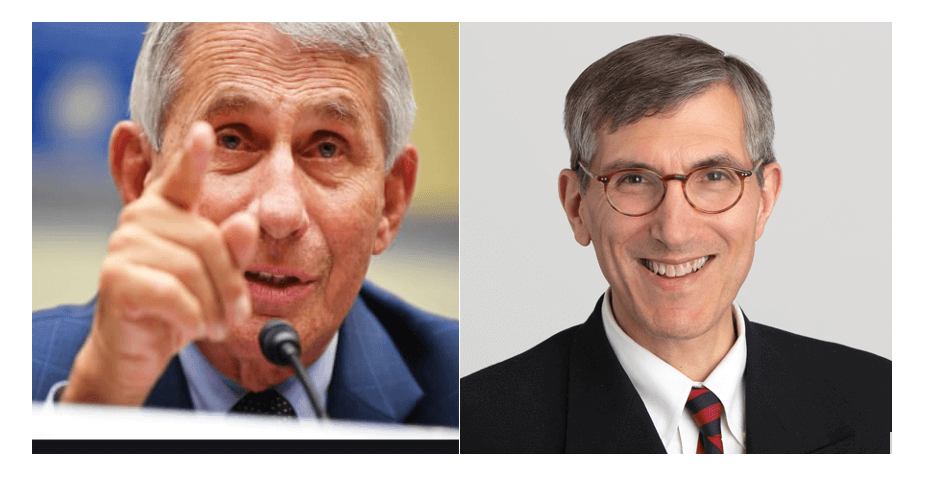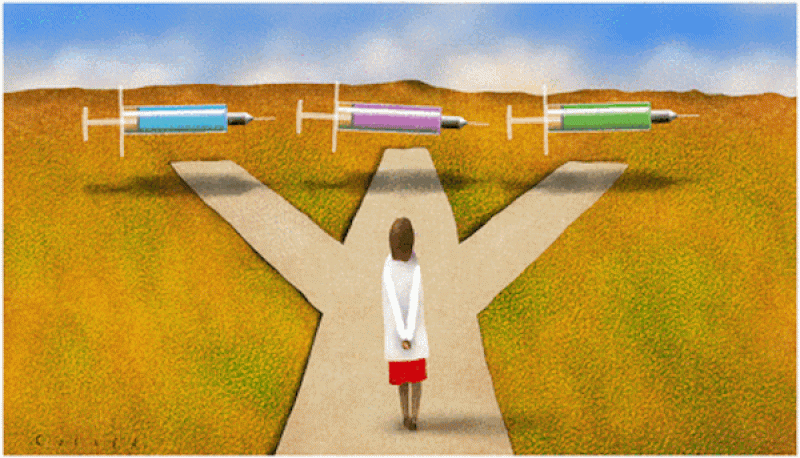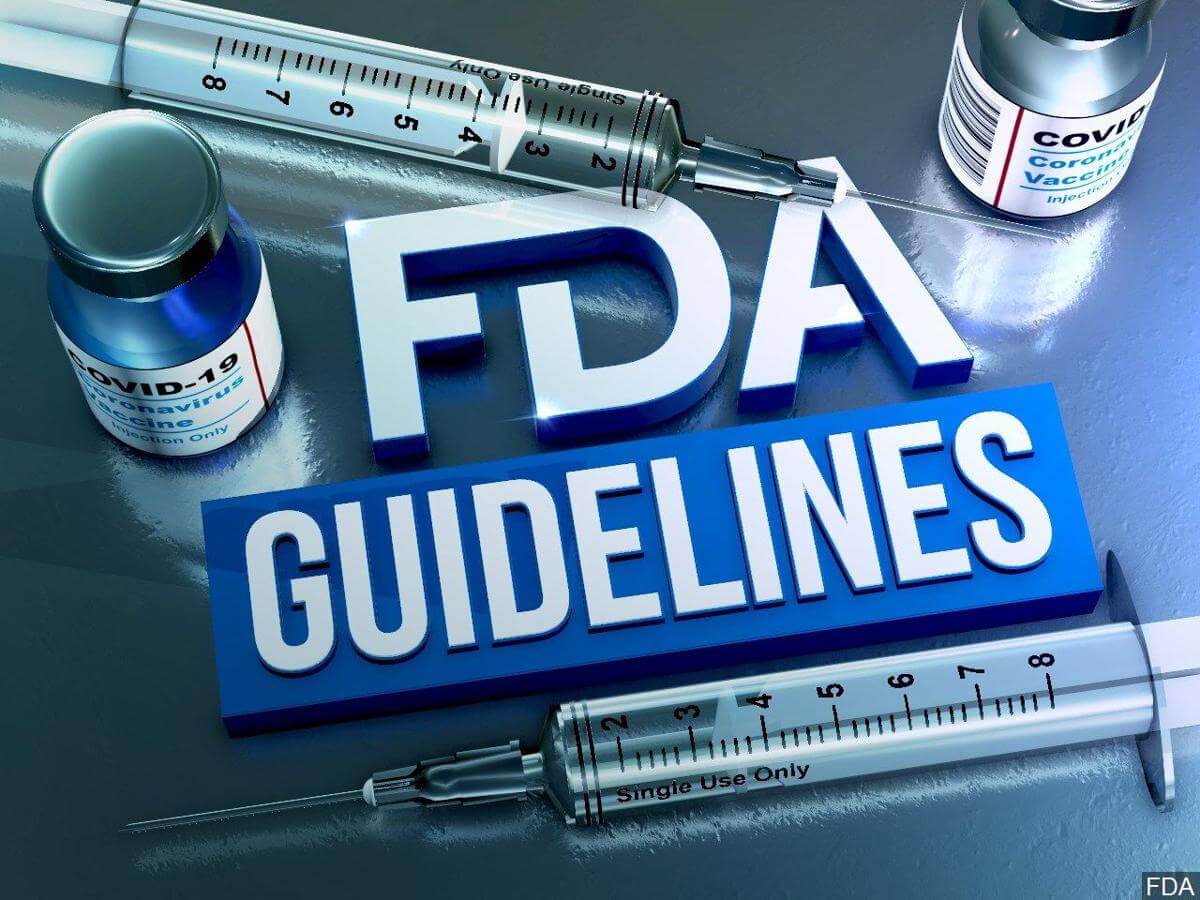To reassure the public that the checks and balances that regulatory agencies have always had in place will prevail, Anthony Fauci, MD, Director of the National Institute of Allergy and Infectious Diseases, and Peter Marks, MD, PhD, director of the FDA’s Center for Biologics Evaluation and Research, discussed the current state of the science with Howard Bauchner, MD, at JAMA Live Q+A webinars for the media on September 25 and October 5. Their comments interweaved into a compelling narrative is like visiting with two scientific maestros.
“The big elephant in the room is that someone will make a political end run,” said Fauci. “If you look at the standard process of how these things work, you can feel comfortable that it is unlikely that will happen.”
That statement runs counter to public perceptions. Both scientists maintain that despite outside pressures, the clinical trial trajectory and the regulatory approval process have followed traditional steps, even with overlapping stages and the consensus commitment to speed up the process in response to the national emergency. Fauci is “cautiously optimistic” from the phase 1 and 2 results that even with the rush, multiple vaccines are likely to protect.
Despite pain and angst in dealing with the most historically unprecedented pandemic of the last 102 years, the fact that we’re doing these things is a wonder to behold. The idea that you get a viral genome sequence January 10 and start phase 1 clinical trials for a vaccine one to two months later and six months later start phase 3 … how did that happen? Because of platform technologies and our understanding of pathogens.
The race to the finish line, hopefully with multiple winners, will become more compelling as colder weather drives more people indoors, where the spread of the virus is greater. Fauci and Marks walked listeners through the steps forward, underscoring their belief that the process is working.
Step 1: The Data Safety Monitoring Board
Phase 3 clinical trial results go to a Data and Safety Monitoring Board (DSMB) before the FDA weighs in. “The DSMB communicates with the company, not us. One of the trials will meet specific endpoints that trigger analysis, the company will do the analysis, show the results to the DSMB, and the DSMB will declare whether the trial should continue or if it is futile,” said Marks.
A DSMB has eclectic expertise, including scientists, clinicians, vaccinologists, statisticians, and ethicists. It “is independent and not beholden to the administration, any company, FDA or me. Nobody. They are the only ones who see the data from the double-blinded, placebo-controlled trials,” said Fauci.
Meanwhile, an unblinded statistician — who knows who received vaccine and who placebos — looks at the data intermittently, apart from everybody else, to see what’s happening.
“One possibility is that the data so far are not going to provide an answer. Another is that the data suggest that the trial should keep going, but we don’t yet know enough to go one way or another. Or, you’ve got a problem, more infections in the vaccine group than in the placebo group. And that means STOP. Or, you’ve reached the predetermined endpoint for efficacy,” explained Fauci.
The endpoint is if the vaccine works; that is, significantly more cases of COVID-19 occur among the non-vaccinated than among the vaccinated, after participants have community exposure to the virus. The earlier trials as well as phase 3 also track the details of the immune response, such as levels of neutralizing antibodies and T cell counts. After a DSMB thumbs up, the company decides what type of application to submit to FDA.
Step 2: Full clearance or Emergency Use Authorization?
An Emergency Use Authorization (EUA) is exactly what it sounds like: a mechanism to speed availability of a new vaccine or drug based on a stripped-down version of what’s required for full-fledged “approval” (“clearance for marketing” in FDA-speak). The approval request for a biologic — a molecule manufactured in a cell or organism — is called a Biologics License Application (BLA).
“The company determines if it will submit an EUA or BLA request to FDA. The amount of data required in terms of tables and analyses differs. An EUA for a vaccine would be hundreds to thousands of pages long. A BLA can top out at hundreds of thousands of pages because it is dealing with trials that involve more than 30,000 people,” said Marks.
All the data are sent to the agency — case reports, medical records, analyses and summaries. And FDA can interrogate the data separately, such as leaving out a specific type of patient and seeing if the overall conclusions change. A vaccine might not work as well on people over age 70 than younger people, for example.
Evaluating data for an EUA doesn’t entail as much back-and-forth between the company and FDA, Marks said, as does a BLA because an emergency requires speed. “The spirit of EUA is to allow FDA to take into account complex benefit-risk calculations,” said Marks.
An EUA typically takes weeks , a BLA months, Marks said. But Howard Bauchner added that for COVID-19 vaccines, the FDA is requesting two months of follow-up after the second injection (most candidates are two shots, 3 to 4 weeks apart) to issue an EUA.
For either an EUA or BLA, pieces of the voluminous submission are farmed out by expertise at the agency, to statisticians, toxicologists, pharmacologists, and chemistry manufacturing and controls experts, with great attention paid to “pharmacovigilance,” the buzzword denoting drug safety and monitoring for adverse effects.
Vaccine evaluation balances safety and speed. And the scrutiny continues as a vaccine is distributed and rarer adverse effects may emerge as more people take it.
Trial participants provide some of that data by checking in on apps linked to the electronic medical record to report symptoms. If a symptom — rash, for example — was exceedingly rare among tens of thousands of participants from 42 days before the trial, but shows up suddenly in the 42 days after taking the vaccine, then rash could be an adverse event. The trial might stop, depending on the severity of the symptom, and the reaction evaluated. The more people who have it, the more likely the vaccine is the cause.
The first phase 3 results are expected in November or December at the earliest, and then a 2-month window will follow to issue an EUA, assuming regulators pursue this faster route. The calculation is nuanced.
“FDA approval is not so much product approval based on safety and efficacy, but understanding how that fits into a benefit-risk profile that accounts for a specific situation. For vaccines, that means a safety profile for millions of people that has to be incredibly clean,” Marks said.
Step 3: Independent expert review
Next stop: the Vaccines and Related Biological Products (VRBP) Advisory Committee, consisting of 15 independent experts, mostly academics, who report to the FDA Commissioner. They hail from immunology, molecular biology, virology, epidemiology, infectious diseases (including coronavirus authorities), pediatrics, microbiology, biochemistry, and biostatistics; and experts in vaccine development, policy, safety and immunization practices.
The members of the VRBP, who are thoroughly vetted for conflicts of interest, determine whether the safety and efficacy data are sufficient to warrant an EUA or BLA. The committee will meet October 22 to discuss COVID vaccines in general.
Once the VRBP meets, the data are released to the public, and the scientific community examines it. That means that anyone questioning an ultimate decision can look at the data.
Fauci summarized the situation:
Any kind of hanky panky people are worried about has to get through multiple check points. The DSMB, then data go to FDA, then go to the VRBP advisory committee to the FDA, then the scientific community looks at the data. These professionals at FDA have been doing this their entire career, this is what they do every single day.
They aren’t political appointees, he and Marks said.
Step 4: CDC Weighs in after FDA go-ahead: ACIP
After FDA decides a vaccine can progress, via EUA or BLA, the CDC weighs in with an ACIP (Advisory Committee on Immunization Practices) report. The ACIP provides academic expertise in the biology of the disease a vaccine will prevent.
“They look at the data to see how in practice to most effectively apply the findings. And they’re not limited to company-submitted data. They may take a broader view to decide which population will benefit most,” said Marks.
Because of the urgency of the pandemic and the possibility of a cold-weather surge, the CDC is already queued up to jump into action at an approval. “Time can be lives. There will probably be rapid-fire getting through emergency authorization or approval from FDA and then getting to ACIP,” Marks added.
Protection won’t be 100 percent
Not everyone responds to a vaccine. The clinical trials are enrolling enough people to detect 60% efficacy, Fauci said, and he’s hoping for 70 to 75%.
Marks agreed. “If we get a vaccine with 70 to 80% efficacy and deploy it to 70 to 80% of the population, we have a chance of achieving herd immunity. Then we can open up the restaurants and I’ll get my living room back from where my kids are going to college right now. But that will happen only if people have confidence enough to get vaccinated.”
Convincing people to be vaccinated will require letting them in on how a vaccine makes it to market. Said Fauci. “You have to be transparent, consistent, and reach out to the community in general and specifically to minority communities. They have extra skepticism about things regarding government because of the history of being mistreated. We must engage the community by talking to trusted community people about the importance of getting vaccinated.”
Question of durability
A big unknown is vaccine durability — how long vaccine-induced immunity will last. That depends on how the natural infection progresses.
Fauci explained:
If you’re infected and the virus stays in the upper airway we know from common cold coronavirus that the durability of immunity is in months, a year at the most. That’s why we get repeated infections of the same common cold coronavirus over the years. But if you are infected and develop systemic disease, in the lungs, GI tract, it’s conceivable that you would induce an immune response with greater durability because the stimulation is systemic and not just the airway.
We have to be humble and modest and admit that we don’t know the answer. The hope is to give a prime and a boost that would induce enough of a response that it would be durable enough for at least a year or more. I’d like to see multiple years of protection, but we don’t know if that’s possible. At this point it’s a guess, not dogma.
Finish line: When will everyone who wants one get a vaccine?
Fauci ventured a cautious prediction as to when the vaccination process will begin to bear fruit:
Even though theoretically we could vaccinate everyone in 4 months, by the time we get enough people vaccinated to feel an impact on the outbreak and start thinking about returning more towards normal, that very likely will be the third quarter of 2021.
Hundreds of millions of vaccine doses are going to be needed in the US alone. But the vaccination process, starting with health care workers, possibly could begin towards the end of this awful year.
Although the public is getting a crash-course in how science works, unease and impatience can emerge at the realization that science can’t provide definitive answers or “proof.” Instead, science shifts and changes what we thought we knew as evidence accrues — like the guidance on mask-wearing. We simply can’t predict how the vaccination against SARS-CoV-2 will go.
Marks summed it up.
We can’t be perfect, but we are going to make sure we’ve done our darndest to make sure the American public has a vaccine that is the best possible vaccine that can come from this process, and hopefully multiple vaccines.
































